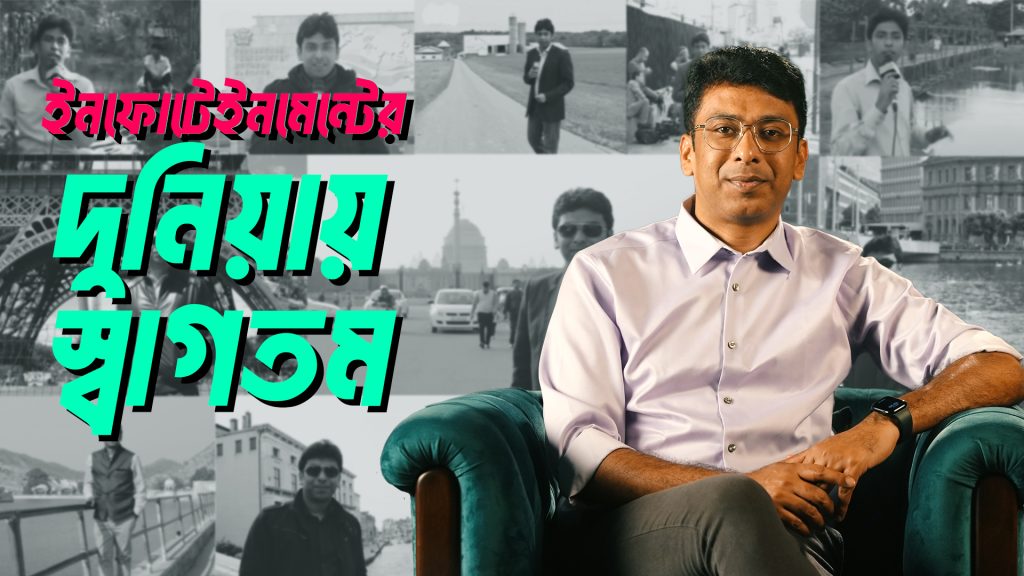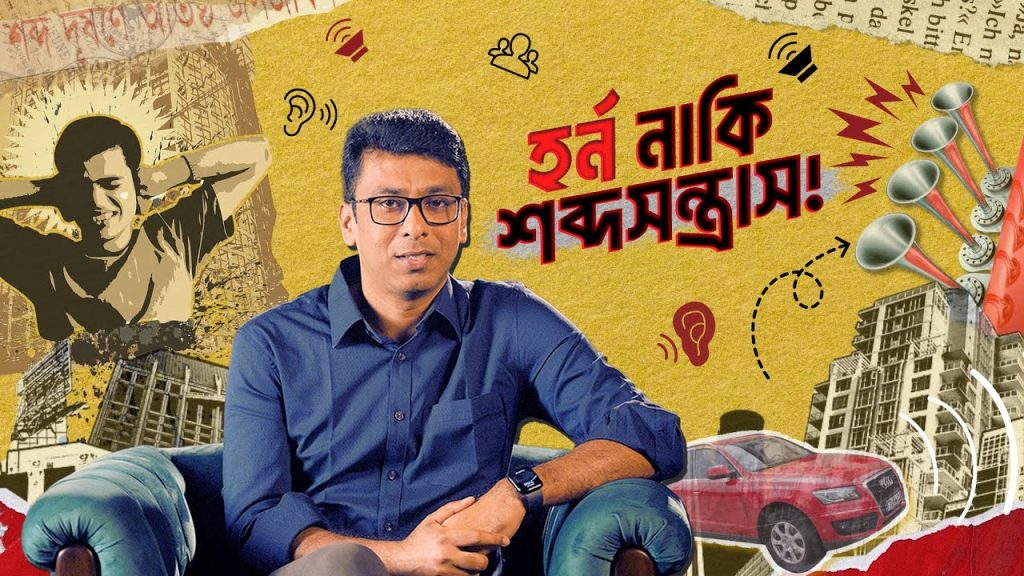গল্পটা শিল্পাচার্য জয়নুল আবেদিনকে নিয়ে। স্প্যানিশ ভাষা না জানার কারণে একবার স্পেনের এক রেঁস্তোরায় খেতে গিয়ে ভীষণ লজ্জায় পড়তে হয়েছিলো তাকে। ওয়েটাররা স্প্যানিশ ছাড়া অন্য কোন ভাষা বোঝেন না, আর জয়নুল পারেন বাংলা আর ইংরেজি। এই অবস্থায় শিল্পী জয়নুল কী খেতে চাইছেন তা কোনভাবেই বোঝাতে পারছিলেন না। ওয়েটাররা তার কথা শুনে হাসি-তামাশা শুরু করে।
কিঞ্চিত অপমান বোধ করলেও হঠাৎ মাথায় বুদ্ধি খেলে গেল তার। আঁকা শুরু করলেন খাবারের ছবি। গরুর মাংস, মুরগির ডিম, মাছ, ভাজি, স্যুপ, সবজি, দুধের গ্লাসের ছবি এঁকে ওয়েটারদের দেখালেন। এমনকি তিনি যে মদ পান করেন না সেটাও ছবিতে বুঝিয়ে দেন। কিছুক্ষণ আগের হাসির পাত্র মুহুর্তেই সবার আকর্ষণের কেন্দ্রবিন্দু হয়ে যায়। রেঁস্তোরার মালিক ও আশেপাশের অনেকেই তাঁর সঙ্গে বন্ধুত্ব করতে এগিয়ে আসেন। এমনকি অনেকে বাড়িতেও দাওয়াত দিলেন।
ভাষা নিয়ে সবাই কমবেশি সমস্যায় পড়ি। নানান ভাষায় ভিন্ন ভিন্ন বর্ণমালা সবার জানা সম্ভব না। এক্ষেত্রে এঁকে বোঝানোর ব্যাপারটা দারুণ। কিন্তু সবাই তো আর জয়নুল নয় যে, মুহূর্তেই ছবি এঁকে এঁকে মনের কথা বলে ফেলবে। যদি বর্ণমালাটাই ছবির মতো হতো, তাহলে?
শুভেচ্ছা সবাইকে।
প্রাচীন মায়ান সভ্যতার অধিবাসীরা এই অসম্ভব ব্যাপারটাই ঘটিয়েছিল। মায়ানদের বর্ণমালা ছিল অনেকটা ছবি বা লোগোর মতো। যা দেখে সহজেই একটা ধারণা পাওয়া যেত। সবচেয়ে প্রাচীন বর্ণমালার একটা এই মায়ান বর্ণমালা। এটা খানিকটা হায়ারোগ্লিফিক লেখার মতোই। মায়ানরা প্রায় ৮০০ টিরও বেশি ছবি ব্যবহার করেছিল নিজেদের লেখায়। যা তাদের সভ্যতা আর সংস্কৃতি সম্পর্কে একটা ধারণা দেয়।
উইকি আর বিভিন্ন জার্নাল ঘেঁটে জানা যায়, খাবার-দাবার আর পোশাক-আশাকে মায়ানরা ছিল বিচিত্র। অভিজাত শ্রেণীর মায়ানরা জীবজন্তুর চামড়া দিয়ে পোশাক বানাতো। সাধারণ মায়ানরা নেংটি পরত। গরমের দিনে পুরুষরা উপরের অংশে নগ্ন থাকলেও শীতকালে পরতো জীবজন্তুর লোম দিয়ে তৈরি ‘পঞ্চ’ জাতীয় পোশাক।
তবে মায়ান নারী-পুরুষ উভয়েরই একটা মজার মিল ছিল। বিবাহিত মায়ানরা বিয়ের প্রমাণ হিসেবে গায়ে ট্যাটু আঁকতো। আর নারী-পুরুষ উভয়েরই চুল থাকতো লম্বা। বিয়ের ক্ষেত্রে বাহ্যিক সৌন্দর্যকে গুরুত্ব দিতো মায়ানরা।
খাবারের ক্ষেত্রে তাদের প্রথম পছন্দ ভুট্টা। সব খাবারের সাথে ভুট্টা ছিলো কমন। মদ তৈরিতে পর্যন্ত তারা ভুট্টার ব্যবহার করতো। আমিষের জন্য শিম, বরবটি, মটরশুঁটি, হাঁস, বক ও টার্কি মুরগি খেলেও সামুদ্রিক মাছ মায়ানদের বিশেষ পছন্দ ছিল। তেলাপিয়া জাতের মাছ ছিল সবচেয়ে প্রিয় খাবার।
কোকো গাছের ফল থেকে তৈরি হওয়া চকলেট ছিল তাদের বেশ পছন্দের। অভিজাত মায়ানরা একে অপরকে চকলেট উপহার দিতেন। মজার ব্যাপার হলো, এই কোকো ফলের বীজকে মুদ্রা হিসেবেও ব্যবহার করতো তারা।
মায়ানরা খুবই পরিশ্রমী এবং নিয়মতান্ত্রিক জীবনযাপন করতেন। বিনোদন ছিলো কেবল খেলাধুলা আর নাচগান। তারা ১১১ ধরনের নাচ জানতো। শোনা যায়, ভলিবল খেলাটা শুরু হয়েছিলো এই মায়ানদের হাত ধরেই।
জোতির্বিদ্যা ও স্থাপত্যবিদ্যায় মায়ানদের সাফল্য অবাক করার মতো। এখন থেকে প্রায় সাড়ে চার হাজার বছর আগেই সূর্য, চাঁদ ও নক্ষত্রের অবস্থান আর গতিবিধি নিখুঁতভাবে বের করেছিলেন মায়ান পন্ডিতরা। পিরামিডের আদলে স্থাপনা বানাতেন মায়ানরা। তাদের রাজারা যেসব দালানে থাকতেন, স্থাপনা হিসেবে সেগুলো ছিল অসাধারণ। অন্যদিকে ঘর-বাড়ি তৈরির ক্ষেত্রেও জোতির্বিদ্যার সংযোগ ঘটাতেন তারা।
মায়ানদের তৈরি দালানগুলো দেখলে মনে হতো, দেয়ালের গা বেয়ে সাপ নেমে আসছে। এসব নানান ঘটনা বা পরম্পরা মায়ানদের ধর্মবিশ্বাস প্রতিষ্ঠায় দারুণ ভূমিকা রাখে।
বর্তমান মধ্য আমেরিকার হন্ডুরাস, গুয়াতেমালা, এল সালভেদরের উত্তরাংশ, কেন্দ্রীয় মেক্সিকোর তাবাস্কো আর চিয়াপাসসহ আরো প্রায় ১ হাজার কিলোমিটার এলাকাজুড়ে ছিল মায়ানদের রাজত্ব। সঙ্গবদ্ধ থাকার কারণেই হয়তো অন্য কোন শক্তি মায়ানদের লোকালয় আক্রমণের সাহস দেখাতো না।
বিশেষ এই সভ্যতার জোর্তিবিদরা সর্বপ্রথম ৩৬৫ দিনের স্থায়ী ক্যালেন্ডার তৈরি করেছিলেন। যা থেকে কয়েকশ বছর পরের জাগতিক ব্যাপারগুলোর ভবিষ্যদ্বানী করা যেত। ‘2012’ নামের জনপ্রিয় সিনেমাটিতে পৃথিবী ধ্বংস হওয়ার যে গল্প বলা হয়, সেই কনসেপ্টও এসেছে মায়ান সভ্যতার ভবিষ্যদ্বানী থেকেই।
জ্ঞানে-বিজ্ঞানে উন্নত এই মায়ান সভ্যতা ধ্বংসের কারণ কী? মনে প্রশ্ন জাগছে নিশ্চয়ই? উত্তর খুঁজতে গিয়ে গা শিউরে উঠার মতো কিছু তথ্য পাওয়া যায়। জোর্তিবিদ্যার ম্যাজিক দেখিয়ে যে ধর্মবিশ্বাসকে সাধারণ মানুষের মনে গেঁথে দেয়া হয়েছিল, সেই ধর্মবিশ্বাসই সময়ের সাথে সাথে ভীষণ উগ্র হতে থাকে। আর ডেকে আনে ধ্বংস।
মায়ানরা বিশ্বাস করত, ঈশ্বর মিশে আছেন চন্দ্র, সূর্য ও বৃষ্টির সাথে। তাই সবার প্রার্থনা তিনি শোনেন। ঈশ্বরের প্রার্থনার নামে তারা প্রথমে রক্ত বিসর্জন এবং পরে নরবলি দেয়া শুরু করে।
মায়ানদের বদ্ধমূল ধারণা ছিল- খরা, মহামারী ও দুর্ভিক্ষ আসলে দেবতাদের ক্ষোভ। এই বিশ্বাস থেকেই, কোন দুর্যোগ এলে মানুষ বলি দেয়ার মাত্রা বাড়িয়ে দিতো তারা। ইতিহাসবিদরা মনে করেন, দুর্যোগ, মহামারী ও দুর্ভিক্ষের কারণেই নিশ্চিহ্ন হয়েছিলো এই সভ্যতা। অবশ্য তা নিয়েও আছে ধোঁয়াশা। অনেকে আবার ধর্মীয় উগ্রতাকে দায়ী করেন।
পৃথিবীর প্রতিটি সভ্যতা টিকে থাকে নিজস্ব স্বকীয়তা আর উদারতা নিয়ে। কোন কিছু নিয়ে বাড়াবাড়ি বয়ে আনতে পারে মহাবিপর্যয়। যার উৎকৃষ্ট প্রমাণ এই মায়ান সভ্যতা। তাই পৃথিবীকে সুন্দর করতে দরকার সবার সাথে সবার সৌহার্দ্যপূর্ণ সম্পর্ক।
ধন্যবাদ সবাইকে।
সুস্থ থাকুন, ভালো থাকুন।
The mystery of the Mayan Civilization
The story starts with Shilpacharya Zainul Abedin. Once, he faced a unique challenge at a restaurant in Spain. Since he didn’t speak Spanish, ordering food became difficult. The waiters only understood Spanish, while Zainul could only speak Bengali and English. No matter how hard he tried, he couldn’t explain what he wanted to eat. The waiters laughed at his efforts.
Feeling slightly embarrassed, he suddenly had an idea. He began drawing pictures of the food he wanted—beef, eggs, fish, vegetables, soup, milk. He even managed to show that he didn’t drink alcohol. The waiters, who were laughing earlier, were now captivated by him. The restaurant owner and other patrons approached, eager to make friends. Some even invited him to their homes.
We all face language barriers. It’s impossible to know every alphabet or script. But drawing can sometimes help bridge that gap. Not everyone can be Zainul and instantly sketch their thoughts. But what if the alphabet itself was like pictures?
The ancient Maya civilization achieved just that. Their alphabet looked like pictures or logos, providing a clear idea at first glance. The Maya script, one of the oldest, was similar to hieroglyphics. The Mayans used more than 800 symbols to express their thoughts, giving us a glimpse into their culture.
Research from various sources reveals the Mayans were unique in food, dress, and customs. The elite wore animal skins, while commoners dressed simply. In summer, men often went shirtless, while in winter, they wore coats made from animal fur.
Mayans, regardless of gender, shared some unique traits. Married Mayans tattooed themselves as a mark of their bond. Both men and women had long hair. They valued outer beauty when choosing partners.
Corn was their staple food, and every meal included it. They even used corn for making drinks. For protein, they ate beans, peas, duck, and turkey, but seafood, especially tilapia, was their favorite.
They loved chocolate made from cacao beans. The elite exchanged chocolate as gifts, and interestingly, they even used cacao beans as currency.
The Mayans led disciplined and hardworking lives. Their entertainment consisted of sports and dance, with around 111 types of dances. Interestingly, volleyball is believed to have originated from the Mayans.
The Maya civilization was advanced in astronomy and architecture. Over 4,500 years ago, they could predict the movement of the sun, moon, and stars with precision. Their buildings, shaped like pyramids, were remarkable, especially the palaces of their kings. They even incorporated astronomy in home construction.
Their buildings often had carvings that made it look like snakes slithered down the walls. Such architectural marvels strengthened their religious beliefs.
The Mayan kingdom stretched over 1,000 kilometers, covering present-day Honduras, Guatemala, parts of El Salvador, and central Mexico. This unity likely deterred any external threats.
The Mayans were the first to develop a 365-day calendar, allowing them to predict events years in advance. The concept of the world ending, as shown in the popular film “2012,” also stems from Mayan predictions.
But what led to the decline of this brilliant civilization? History reveals chilling reasons. The Mayan belief system, initially grounded in astronomy, became increasingly extreme over time, leading to their downfall.
The Mayans believed their gods resided in the moon, sun, and rain, and would listen to prayers. They began with blood offerings and eventually resorted to human sacrifices.
They thought drought, epidemics, and famine were signs of divine anger. So, during hardships, human sacrifices increased. Historians believe these crises, alongside famine and disease, were primary causes of the Mayan collapse. Others attribute it to religious extremism.
Every civilization survives by balancing its unique identity with openness. Excesses in anything can bring disaster. The Mayan civilization is a prime example. To make the world better, we must foster harmony with one another.
Thank you, everyone. Stay well, stay healthy.



Your article helped me a lot, is there any more related content? Thanks!